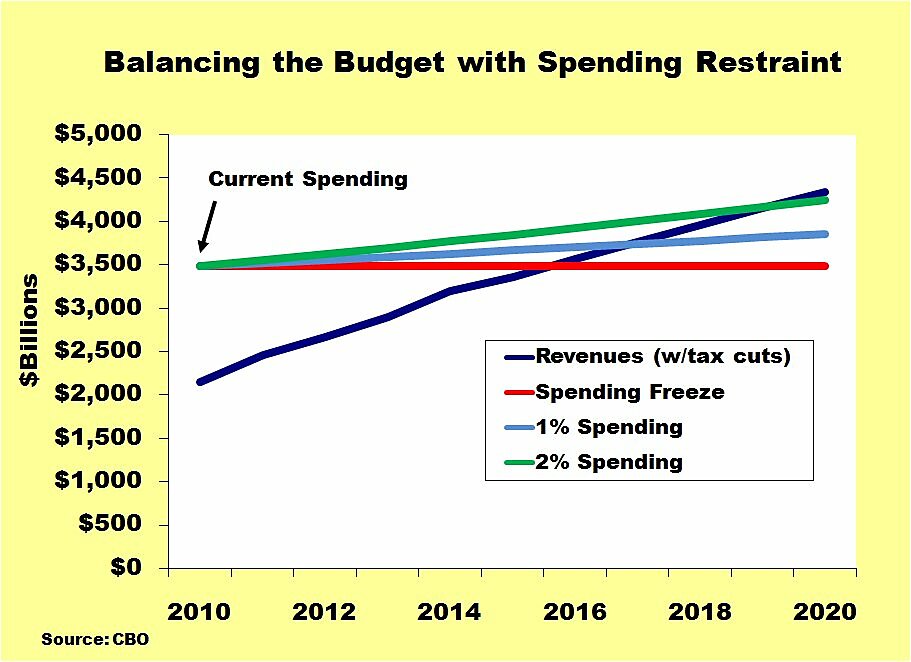I’ve already commented on the proposal from the Chairmen of President Obama’s Fiscal Commission (including a very clever cartoon, if it’s okay to pat myself on the back).
Now we have a similar proposal from the so-called Debt Reduction Task Force. Chaired by former Senator Pete Domenici and Clinton Administration Budget Director Alice Rivlin, the Task Force proposed a series of big tax increases to finance bigger government. I have five observations.
-
Notwithstanding a claim of $2.68 trillion of “spending cuts” during the 2012–2020 period, government gets a lot bigger during the decade. All of the supposed “cuts” are measured against an artificial baseline that assumes bigger government. In other words, the report is completely misleading in that spending increases get portrayed as spending cuts simply because government could be growing even faster. Interestingly, nowhere in the report does it show what total spending is today and what it will be in 10 years, presumably because the authors realized that the fiction of spending cuts would be hard to maintain if people could see real-world numbers showing the actual size of government now and in the future.
This chart shows what it would actually take to balance the budget over the next 10 years — and these numbers assume all of the tax cuts are made permanent and that the alternative minimum tax is extended.
- The Task Force proposes a value-added tax, which is estimated to generate more than $3 trillion between 2012 and 2020. They call this new tax a “debt reduction sales tax” and I can just imagine the members giggling as they came up with this term. They may think the American people are a bunch of yokels who will get tricked by this language, but one can only wonder why they think making our tax system more like those in Europe will lead to anything other than more spending and less growth.
- The Task Force proposes to dramatically increase the scope of the Social Security payroll tax. Since this is something Obama called for in the campaign and also something endorsed by the President’s Fiscal Commission, this proposed tax hike should be viewed as a real threat. I’ve explained elsewhere why this is bad tax policy, bad fiscal policy, bad entitlement policy, and bad Social Security policy.
- To add “stimulus” to the package, the Task Force proposes a one-year payroll tax holiday. The good news is that they didn’t call for more spending. The bad news is that temporary tax cuts have very little pro-growth impact, especially if a tax cut will only last for one year. Unfortunately, the Task Force relied on the Congressional Budget Office, which blindly claimed that this gimmicky proposal will create between 2.5 million‑7.0 million jobs. But since these are the geniuses who recently argued that higher tax rates boost growth and also claimed that Obama’s faux stimulus created jobs, those numbers have very little credibility.
- While the Task Force’s recommendations are unpalatable and misleading, there is a meaningful distinction between this plan and the Obama Administration’s fiscal policy. The Task Force assumes that government should get even bigger than it is today, but the Obama Administration wants government to grow at a much faster rate. The Task Force endorses massive tax hikes, but generally tries to avoid marginal tax rate increases that have especially large negative supply-side consequences. The Obama White House, by contrast, is fixated on a class-warfare approach to fiscal policy. One way of characterizing the different approaches is that the Task Force represents the responsible left while the Obama Administration represents the ideological left.

